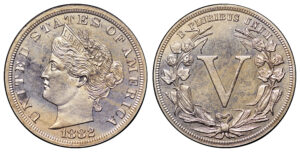Beauty and the Mona Lisa Smile

Have you ever wondered about the woman from da Vinci’s most famous painting? Who was she? Theories abound and range from a princess to an unknown courtesan, to Vinci’s mother, to his self-portrait.
Wait. What? Self-portrait? Isn’t Lisa a girl? There are some who look at Lisa and think she has masculine features. I didn’t think so, but after learning a little more about beauty standards in 15th and 16th century Italy, it made a little sense. Not much, but a little.
Lisa has a normal sized forehead. No bangs, but not so wide that it looks as if she has a receding hair line. Women of the Renaissance wanted wide foreheads, and if they didn’t have one naturally, which most women didn’t, they would pluck out the hair around their faces in order to get that look. Hair was considered a bad thing for women. They would pluck their eyebrows either completely or to a very fine line. Some snipped off their eyelashes if they were too long. Huh? I thought long eyelashes were a part of a woman’s charm.
It goes back to the “science” of the era. Men were “hot and dry” and women were “cold and wet”. Don’t ask. Remember, this was a bridge period, a transition from centuries of Medieval superstitions to the modern age of increasing knowledge. Hot and dry—masculinity—bred hair. Cold and wet—femininity—didn’t. If a woman had too much hair anywhere on her body but the back of her head, she might be overlooked for a good marriage because she would be seen as too hot and dry, or masculine, to be a good baby oven. Ah, but Lisa has no eyebrows or eyelashes that we can see. So maybe she was a lady and not a man. Or maybe over cleaning of the portrait through the years removed the paint where eyebrows and eyelashes had been? It’s a theory, but I don’t buy it. Yet another theory is that the attention-deficit da Vinci never finished the portrait. Seems unlikely as well.
Another clue is her hair color. I used to think Lisa’s hair was dark brown. And maybe it was. Naturally. But closer inspection reveals the hair under the veil has a reddish or auburn tint. The kind of red that dark hair might take on from being in the sun for long periods of time.
Another beauty requirement for Renaissance women was blond hair. Before you get a mental picture of a bunch of chubby Renaissance beauties sitting around outside sunbathing in their linen shifts, faces turned toward the sun and soaking up its warmth, remember tanned skin was not considered beautiful. The more pale the skin, the better. Women would use lead based white make-up to give their skin that perfect, pale porcelain doll look. This make-up didn’t just clog their pores and give them a little acne if they didn’t clean it off at the end of the day. No, this stuff was poisonous and often ate holes in the skin of their faces. Some women used more lead paint to cover up the holes, and made the holes deeper. Some women died of lead poisoning. All because they wanted to live up to an unreasonable standard of beauty. I guess we haven’t progressed all that far in 500 years, huh? Lead paint might be out, but women, young and old, continue to do horrible things to their bodies in order to live up to a standard that few, if any, women fit naturally. But I’m rabbit trailing. Or soap boxing. Sort of.
To get that beautiful blond hair without access to Walgreens for a box of hair bleach, and without acquiring the dark skin staying in the sun too long can cause, our Renaissance predecessors spent hours in the sun wearing a crownless hat with a wide brim, which covered their faces but allowed the hair to be exposed to the sun. Sometimes they wore a cape that hung down from the hat and covered their entire bodies. I mean, God forbid they get a little color on their hands. Especially since delicate and feminine (pale) hands were also a thing of beauty to be admired in the perfect Renaissance woman. As a person who does not like the heat, hates to sweat unless I’m exercising, the thought of sitting under a blanket for hours in full sun, waiting for my hair to lighten to a lovely blond is truly torturous. But that’s what they did. Well, the rich ones who had the kind of time to sit around and do nothing but sweat.
Maybe Lisa didn’t have large amounts of free time to sit out in the sun. But maybe when the baby was sleeping and she had a few moments to put her feet up, she would sit outside so her hair could soak up some of those hair-lightening rays. Her lovely raven locks turned, not to orange blond, but to auburn. Another clue that maybe, just maybe, she was a woman and not a man, since men didn’t have the same unnatural beauty requirements and were allowed to have brown or black hair.
Lisa’s oblong but full face gives us another clue. Here is one instance where the women had it easier than the men. I know! Finally. Women were supposed to be a little fuller figured. Soft curves and rounded bellies were in. Just look at Botticelli’s women if you don’t believe me. Those dome shaped bellies were seen as symbols of fertility. If a woman was too skinny, she might be passed up for a good marriage arrangement because she would be seen as too scrawny or too fragile to bear children. Men, on the other hand, were supposed to be tall, slim, athletic, toned. I mean, tight tights. Lisa’s full face, rounded shoulders, and chubby white hands indicate a fuller figure, which also points to her being a woman. Some believe she was actually pregnant at the time, that the painting was commissioned to commemorate the birth of a child. I’m convinced she was a woman.
So who was this lady? Way back in 1550, Giorgio Vasari, an art historian of the era, identified her as Lisa Gherardini del Giocondo. Francesco del Giocondo was a silk merchant from Florence, wealthy enough to commission a painting of his wife from the famous Leonardo da Vinci. Vasari’s identification, however, was made decades after the portrait’s commissioning, and this identity was argued through the centuries. Until six hundred or so years after Lisa posed for her portrait. In 2005, a note was discovered from an acquaintance of da Vinci’s stating he had been working on Lisa’s portrait. Some contend it, but most current art historians seem to agree the Mona Lisa truly is the portrait of Lisa del Giocondo.
A number of the Renaissance beauties immortalized in da Vinci’s, Botticelli’s and other famous painters of the time died early or tragically. Simonetta Vespucci, Botticelli’s Venus, comes to mind. But that doesn’t seem to have been Lisa’s case.
At age fifteen she married a man who was quite a bit older—not uncommon at the time. Her family was an old aristocratic family that seems to have lost its influence and a good deal of its wealth by the time of her marriage. Since marriages were often arrangements made to bring wealth or prestige, nobility or even peace to the two families involved, the fact Lisa’s dowry wasn’t that large leads many to believe she actually was in love with the man she married. Her family name might have brought him prestige since it was an old, noble family name. But it’s nice to think that, in a time when men sought wives for social status and wealth, and mistresses for love and lust, maybe Lisa was one of those blessed women who actually married for love. I like to think so. Francesco’s own words seem to attest to his love for his wife. In his will, he made sure she would be well taken care of upon his death. And to reinforce that, he wrote the following to his children:
“Given the affection and love of the testator towards Mona Lisa, his beloved wife; in consideration of the fact that Lisa has always acted with a noble spirit and as a faithful wife; wishing that she shall have all she needs…”
There is some argument over when Lisa died. Some say she died of the plague at age 63. Others contend—and this is the one I choose to believe—she died at the ripe old age of 71, cared for by her daughter Marietta, a respected member of the highly regarded Florentine convent of Sant’Orsola.
Lisa’s life may have been comfortable, but it wasn’t all fun and games. She suffered the tragedy of losing a child, a baby daughter, in 1499. And then her eldest daughter, Camilla, died young at age 18. She outlived her husband, and I’m sure his passing was not easy for her.
All in all, it’s nice to think that the Mona Lisa smile isn’t really all that enigmatic, and certainly not sad. I see a middle class woman who fit neither the extreme beauty standards of her day nor ours, but who was happy or at least content with the life she had been granted. She had a husband who loved her, and though not as wealthy as the Medici, lived a financially comfortable life and died knowing she had been loved.
Knowing all this about Mona Lisa gives me a whole new perspective on the painting. I can relate to Lisa. Although I don’t fit the standards of beauty our Hollywood-dictating media imposes on women and girls, I have a husband and two daughters who love me. We live comfortably, and I’m sure when I’m old, if I cannot fend for myself, my girls will step in and take care of me till my dying breath. I think that’s worth more than living up to unrealistic beauty standards.

*This post was originally published on my blog at blogspot on July 17, 2017.


